There is an increasing need for embedded security and authentication functions in various devices to ensure the safety of devices, protect intellectual property, and ensure the reliability of communications. There are probably many designers who are worried about "I want to incorporate robust security functions, but I want to avoid complicated software configurations" and "I'm worried about vulnerabilities being introduced by building with software."
This article introduces the advantages of hardware security implementation and the features of the 1-Wire communication interface for engineers who want to incorporate security and authentication functions into their products.

What is Simple and Robust Security? ~Hardware over Software~
There is an increasing need for security and authentication functions in various products such as industrial machinery, medical equipment, and computer equipment.
For example, the following example is representative.
・I want to protect the main unit by recognizing only genuine cartridges in printers and multifunction devices.
・We want to strictly manage the number of uses and expiration dates of disposable parts attached to medical equipment to ensure hygiene.
・Want to certify accessories for semiconductor manufacturing equipment and restrict the use of counterfeit products to maintain safety
Above all, these security features must be robust. Additionally, as development times shorten, simplifying design and implementation is also important. Many engineers may be wondering whether to use software or hardware to achieve this goal.
Let's compare the software implementation with the hardware implementation.
Software security implementations tend to be more costly to implement due to the need to integrate and test various security features. However, it is vulnerable because it is relatively easy to falsify and imitate.
Hardware security implementation can be achieved by simply embedding a security IC with a unique ID. It is easy to integrate with other functions and can reduce implementation costs. Robust security functions can be realized because the difficulty of falsification and imitation also increases.
Hardware implementation is recommended for those who want to install robust security functions and those who want to simplify the design by avoiding complicated software configurations.
|
|
software |
Hardware secure element |
|
implementation cost |
Highly integrated and testable security featuresneed to be |
Easy integration with provided software.Small footprint. |
|
Compliance with standards |
low security level |
high security level |
|
Invasive attack resistance, firmware extraction |
Nothing |
very high |
|
Side channel/glitch resistant cryptography |
It can be reduced, but it will affect performance. Difficult to evaluate. |
very high |
|
secure boot |
MCUdependent |
Yes |
|
TRNG (true random number generator,essential forkey generation andECDSA) |
NormalPRNG (pseudo random number generator) |
high quality |
|
performance |
Low withoutHW accelerator |
high |
|
secure identity |
No, you need to injecta uniqueID and it is difficult to make it immutable |
Yes: ImmutableUID+ digital signature |
|
Pre-program |
Possible, but requiresa secure key injection process |
At the chip manufacturer: very safe |
Comparing software and hardware security
What is 1-Wire communication interface?
A technology that has many advantages in implementing security by hardware is the one-wire serial communication interface standard "1-Wire".
Traditionally, the commonly used I2C interface is a two-wire type. In addition to the GND reference, the master and slave are connected by two communication lines: a data signal (SDA) and a clock signal (SCL).
A 3-wire SPI interface is also a commonly used communication method. In addition to GND, it consists of three communication lines: input data signal (SDI), output data signal (SDO), and clock signal (SCK).
1-Wire, on the other hand, is a one-wire communication interface. In addition to GND, one communication line (DQ) connects the master and slave. It has the following advantages compared to traditional communication methods.
Key Benefits of the 1-Wire Interface
・Reduce the number of communication lines
Wiring costs can be reduced because fewer communication lines are required.
・Long distance communication up to about 500 meters
Long-distance communication up to about 500 meters can be achieved without the need for a repeater.
・Power can be supplied from the communication line
A small amount of power can be supplied to the slave via the DQ line, saving the trouble of considering the power supply on the slave side.
・Security management is possible
Every device has an identification ID and a high level of security can be implemented.
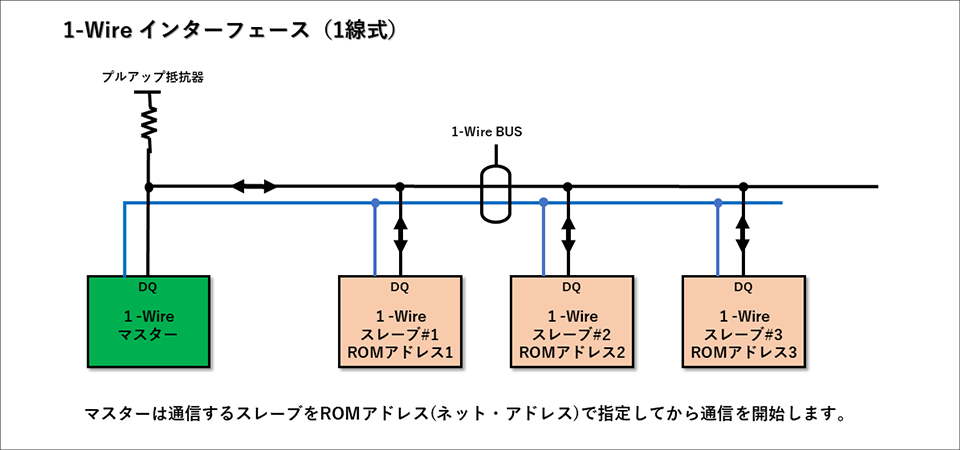
Every 1-Wire device has a unique 64-bit registration number. Since 48 bits of that number are a unique serial number, it is possible to assign up to approximately 280 trillion security IDs.
From IP protection to IoT security, ADI's 1-Wire proprietary technology, which has sold over 4 billion hardware security devices, enables robust security features.
What is 1-Wire's security product "iButton"?
One of the 1-Wire interface devices that has received particular attention is the iButton. An IC chip with a unique ID is packaged in a 16mm thick stainless steel can. It can be easily installed and used anywhere without the hassle of installation.
The package is extremely durable and can be worn almost anywhere, indoors or out. It can be written and read repeatedly even in harsh environments with drops, friction and shock. 10-year durability has been verified in practical tests.
The can has a data contact called the "lid" and a ground contact called the "base", and by touching the two contacts it can communicate with the iButton device through the 1-Wire protocol.
For example, it is used as follows.
・Attach to doorknobs, keys, key holders, etc. to perform entrance/exit authentication to buildings and rooms.
・Performs access authentication for facilities, automobiles, PCs, various devices, etc. by attaching to personal items such as watches and rings.
・Packed with drugs and specimens that require temperature control, and used as a data logger to record temperature changes during transportation
By utilizing iButtons in unique packages, applications can be realized with greatly reduced development and operating costs. Please consider it.
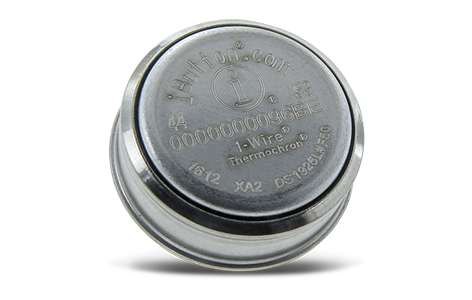
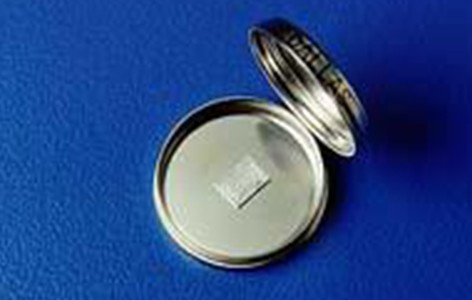
Additional Product Lineup Using 1-Wire Technology
1-Wire technology is used in conversion ICs, temperature sensors, memory ICs, etc., in addition to security ICs.
1-Wire devices are ideal for use cases such as "I want to reduce wires from the conventional I2C interface and SPI interface", "I want to realize authentication system memory functions with fewer communication lines", and "I'm looking for a device for temperature monitoring". You can use the lineup of
Products other than 1-Wire security ICs
conversion (bridge)
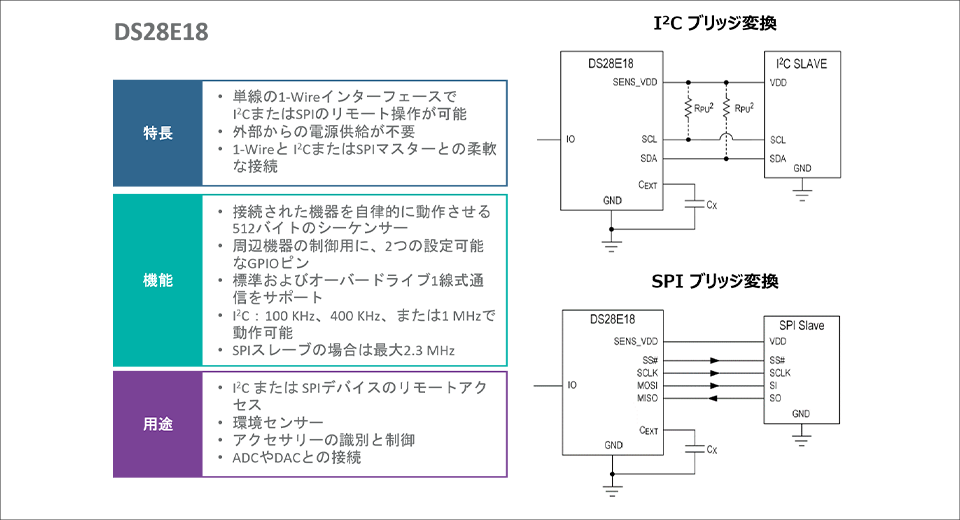
Temperature sensor
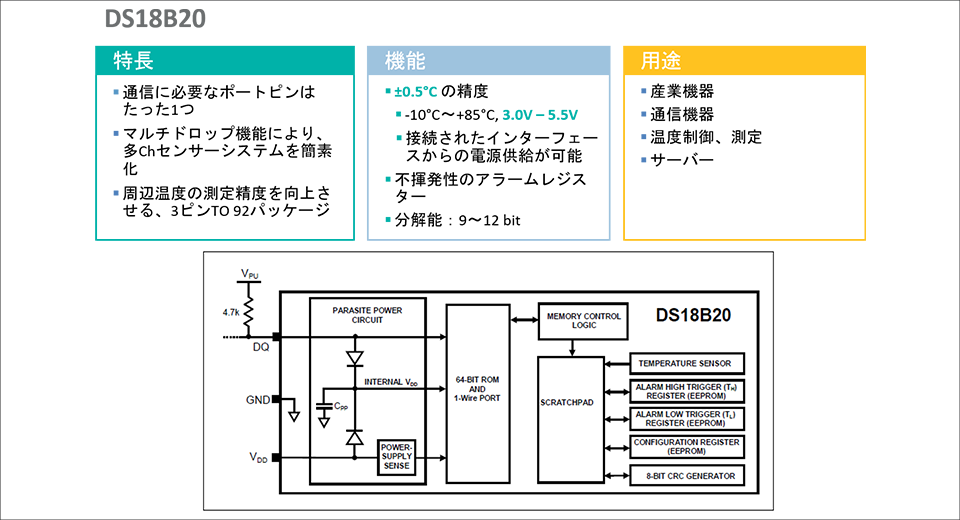
Verification by applying a rapid cooling spray to the temperature sensor "DS18B20"
In this video, the temperature sensor "DS18B20", one of the 1-Wire products, is sprayed with a cooling spray to check its operation.
The functional merits of 1-Wire are also introduced together. Please take a look.
This time, we introduced 1-Wire, a one-wire communication interface suitable for security implementation.
1-Wire devices can be leveraged to implement simple and robust security features in a variety of products.
If you are interested, please feel free to contact us.
Application example
・Home automation
・Disposable equipment in the medical field
・Printer cartridge, toner


Click here to purchase products
Click here for manufacturer site/other related links
Inquiry
If you have any questions regarding this article, please contact us below.
Analog Devices Manufacturer Information Top
If you want to return to Analog Devices Manufacturer Information Top, please click the button below.
